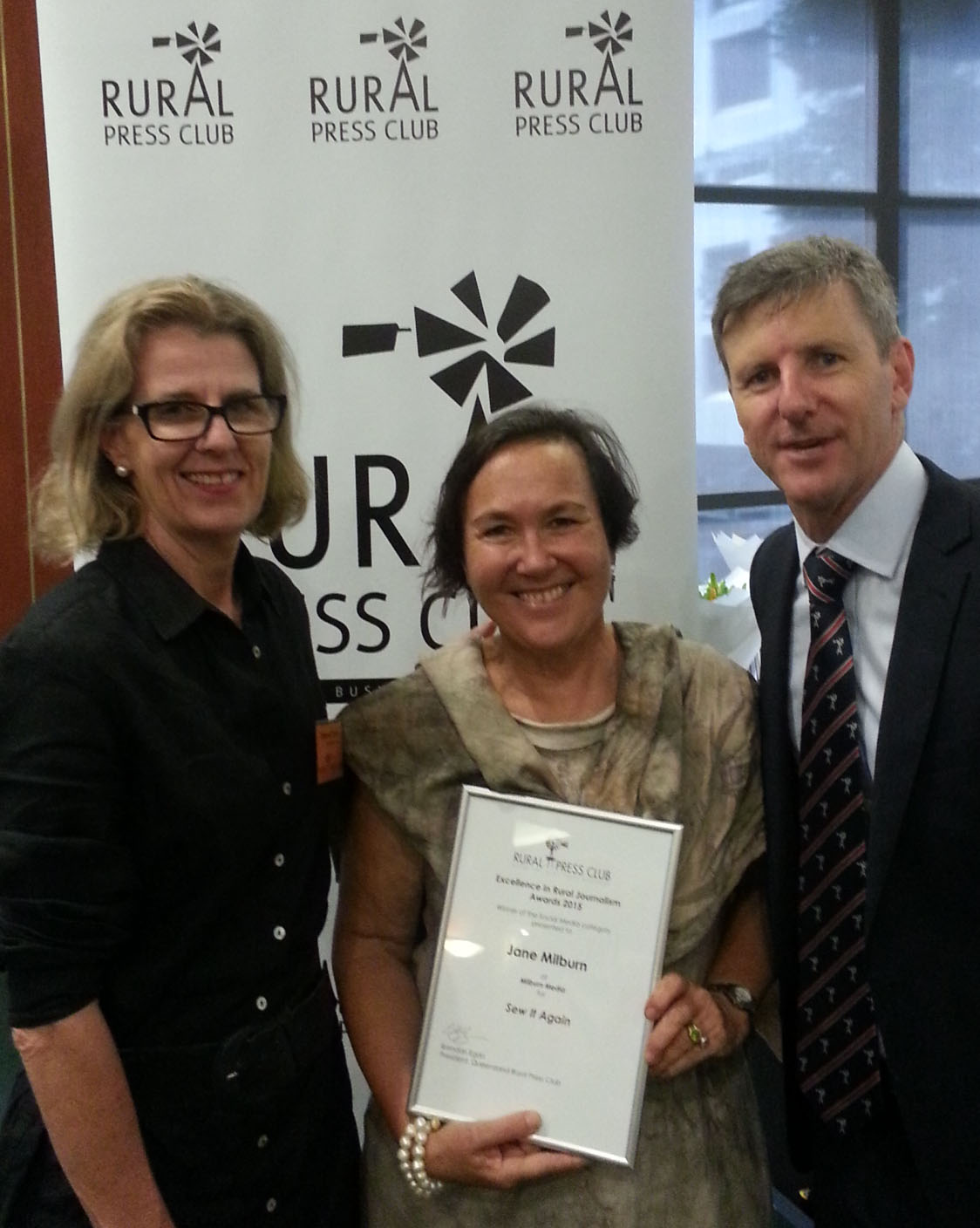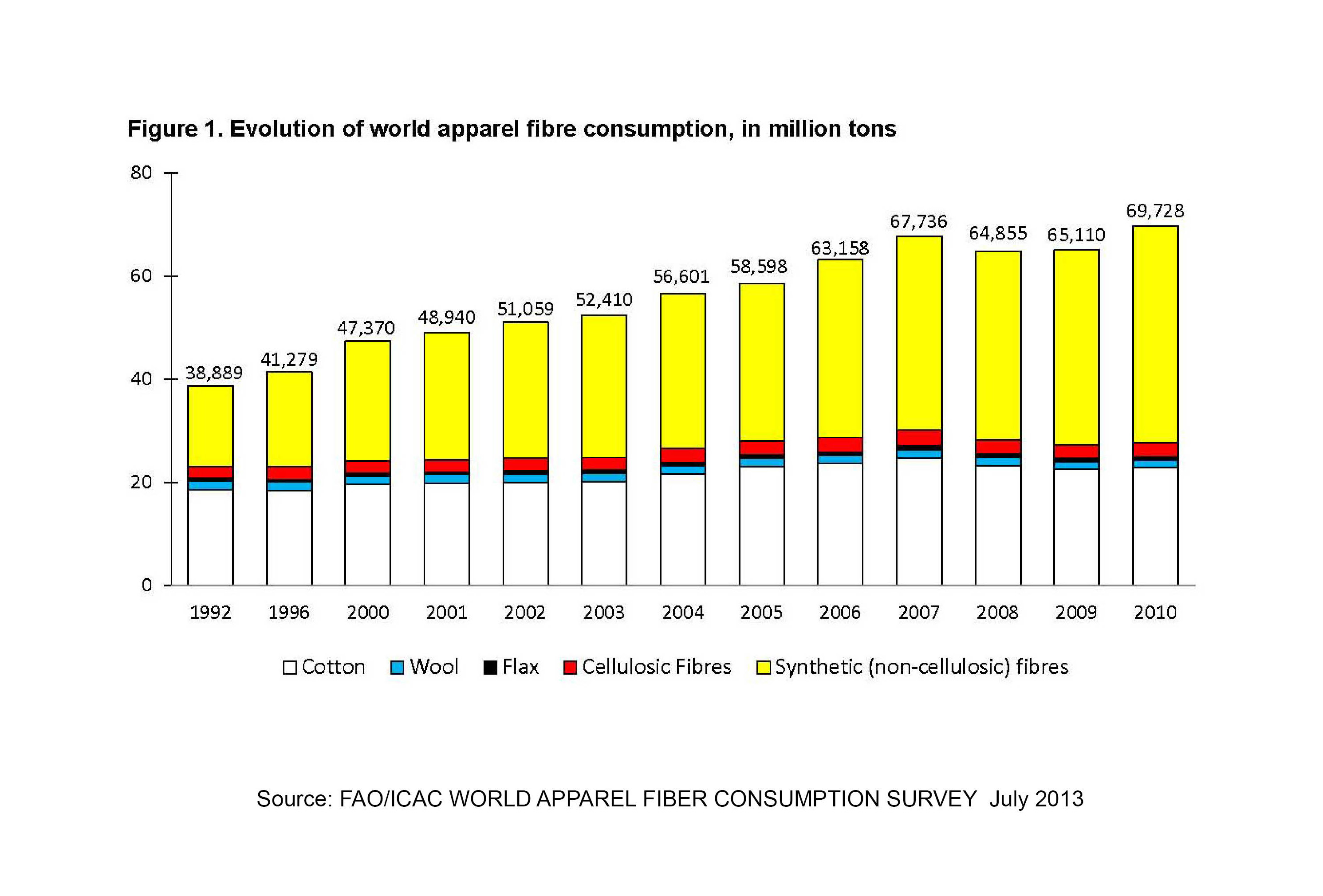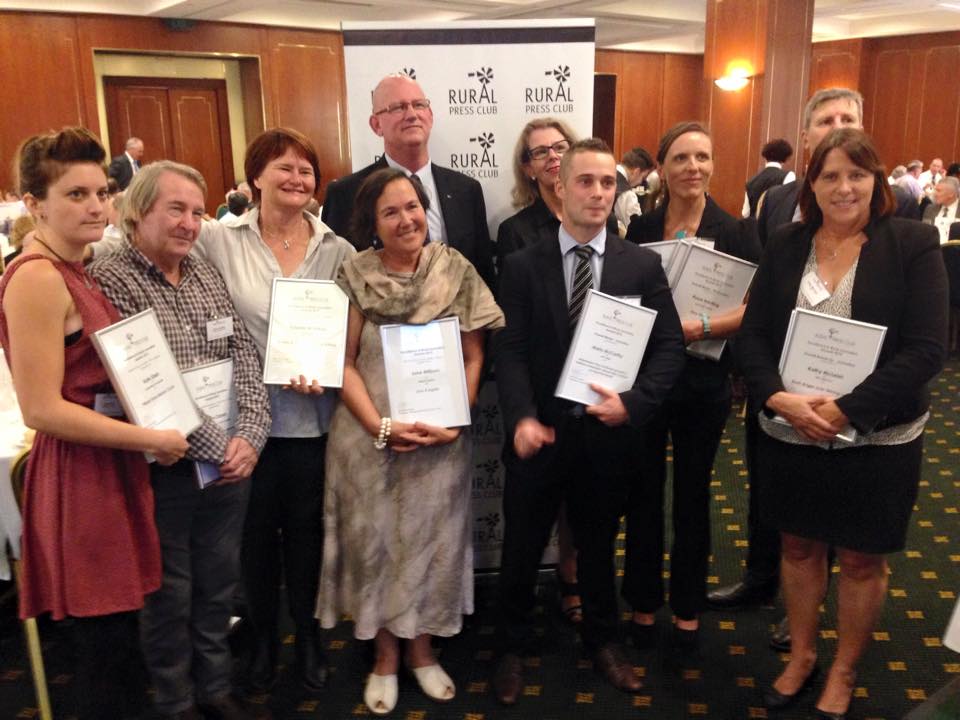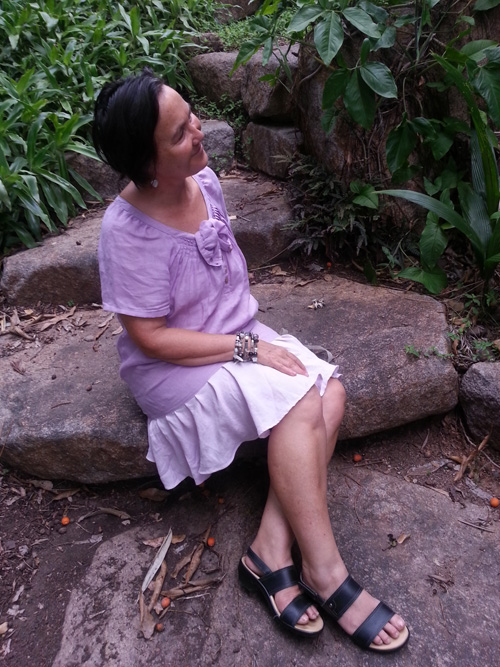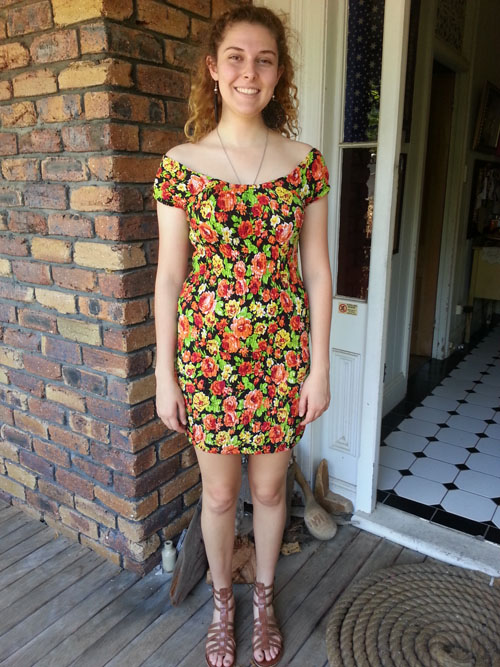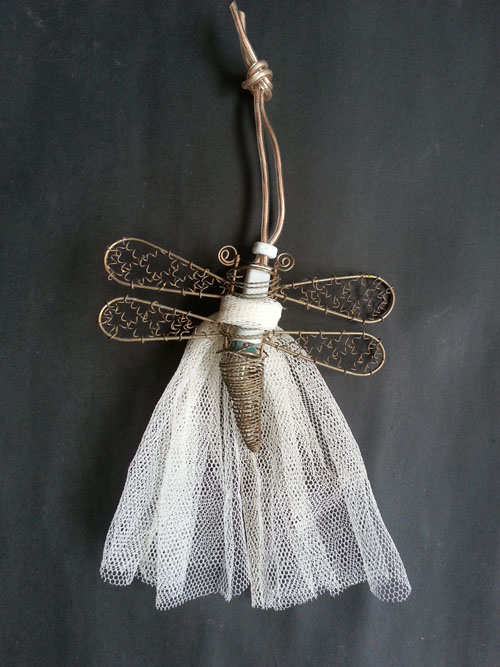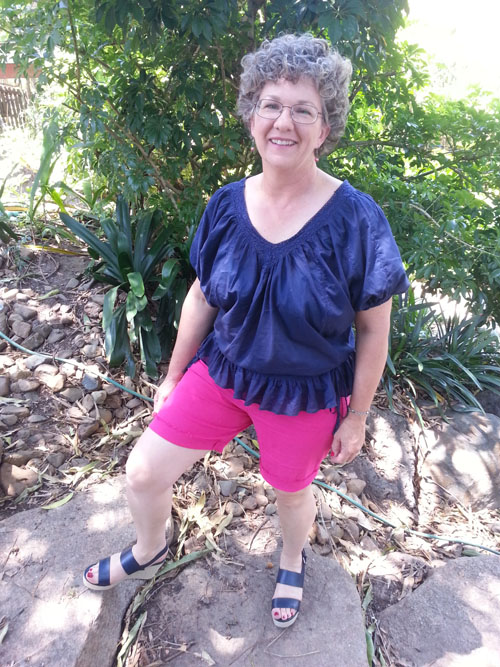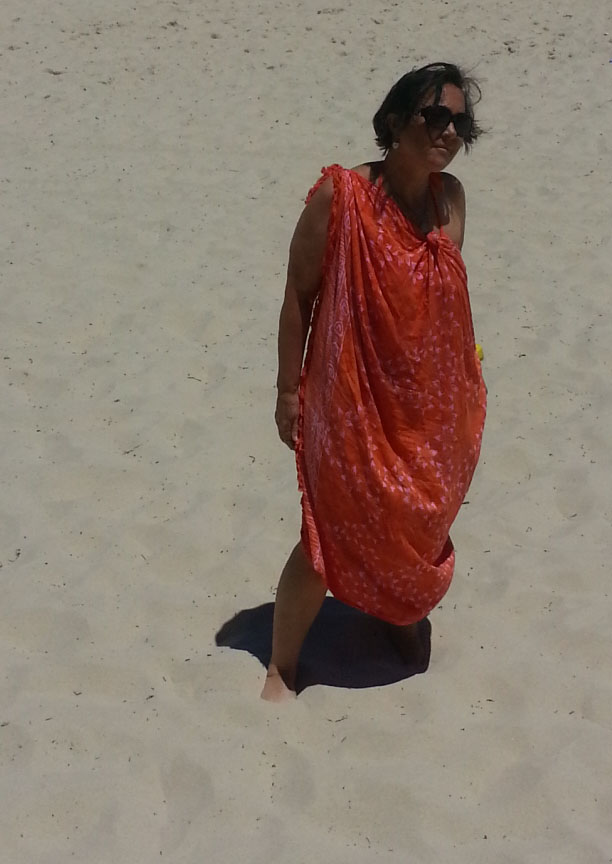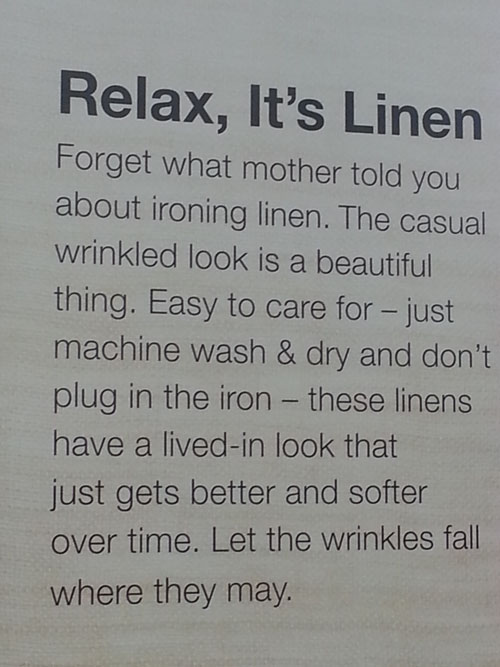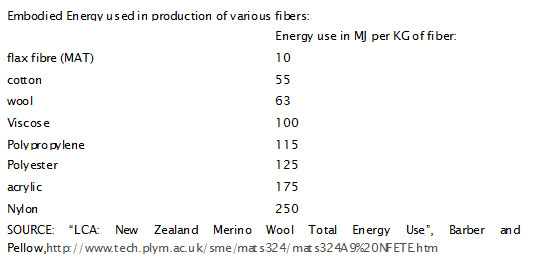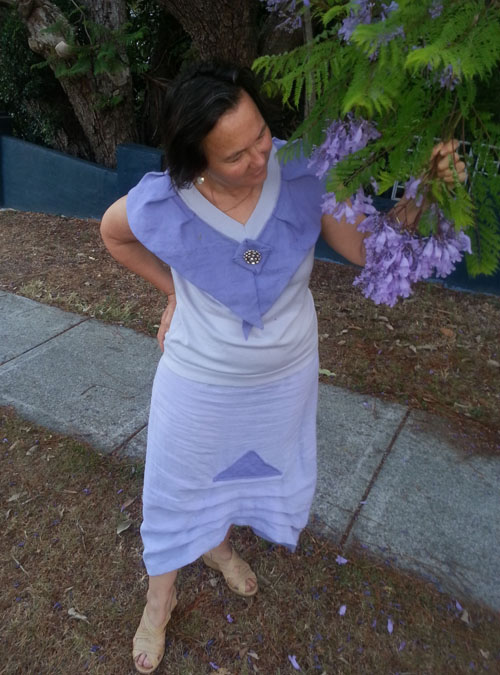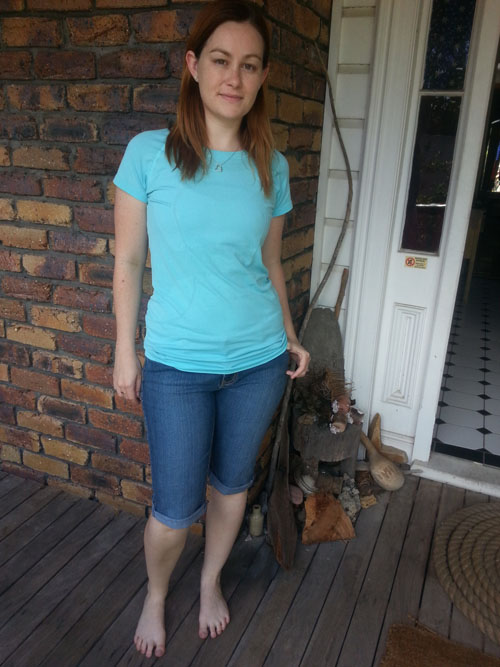It is fantastic to have this work recognised by journalistic peers. Sew it Again was judged Social Media category winner in the Excellence in Rural Journalism 2015 Awards run by the Rural Press Club of Queensland.
The judges comments were: Jane Milburn’s Sew It Again project engaged with the community, had a call to action and was transformative. It actually made a difference in the world.
I am a natural fibre champion and believe that dressing is an agricultural act, unless you prefer synthetic fibre clothing derived from petroleum, coal or gas.
My work has a clear connection to agriculture through its focus on natural-fibre clothing, which now only makes up 1/3 of apparel consumption (see table below). The other 2/3 of clothing are made of synthetic fibres, which 2011 research shows are shedding microplastic particles into the wastewater stream with every wash and these particles are entering the food chain.
This is the message I am now sharing at Textile Beat workshops and talks on slow fashion, natural fibres and dressing with conscience – consistent with my goal to travel the world inspiring creative upcycling of natural fibres.
